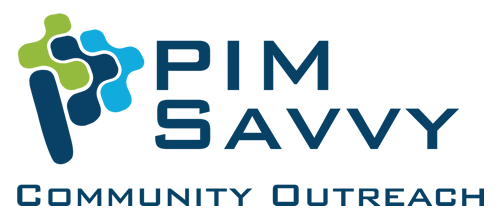Small organizations often struggle with conducting outreach due to limited resources and reach. In our previous blog post, we discussed effective outreach strategies for small organizations. In this post, we will explore indirect outreach methods that can help you reach and spread out your message to your target audience.
Indirect outreach is a powerful method for small organizations like you to reach your target audience and promote products or services. This approach involves engaging with potential customers or supporters in a way that doesn’t directly advertise your organization or your offerings. Instead, indirect outreach involves providing value through educational content or helpful resources that are relevant to the target audience’s interests or needs. By providing value first, you can build trust and establish yourselves as a reliable source of information and expertise in your field. This can lead to increased brand awareness, customer loyalty, and even sales or donations in the long run. In this blog post, we will explore the benefits of indirect outreach and provide tips and strategies for small organizations looking to implement this approach in their outreach campaigns.
Create a Media Kit
When conducting outreach, it’s important to have a variety of materials to communicate your message effectively. Creating a media kit can help you streamline your outreach efforts by providing a collection of materials that can be used across various platforms. A media kit can include different types of materials, such as videos, blog posts, social media posts, flyers, postcards, posters, and 2×2 cards, to cater to different audiences and communication channels. Short videos for social media can be a powerful tool to engage with your audience and showcase your organization’s mission and goals. While social media and other advertising can be costly, investing in it strategically can help to reach a wider audience and build brand recognition.
To make the most out of the media kit you’ve created, it’s crucial to first determine how best to reach your target market. You may want to share your materials frequently on your social media pages and website, display flyers on community bulletin boards, and distribute handouts or send postcards to your target audience (varies based on your target market). In addition, if you’re looking for ways to identify potential contacts, consider using online databases where you can access lists of business addresses or consult a librarian who may be able to direct you to relevant resources. Establishing connections with other organizations could turn into an excellent partnership for both organizations and benefit the target audience greatly.
Leverage Social Media
Creating a strong social media presence can be a powerful way for small organizations to conduct outreach. Platforms like Facebook, Twitter, and Instagram offer the opportunity to reach a broad audience quickly and easily. It’s important to create engaging profiles on these platforms and to post regularly to keep your target audience interested. A set frequency, such as once or twice a week, can be helpful for maintaining consistency. Consider investing in social media advertising to boost important posts and increase visibility. Engage with your audience by responding to comments and messages and sharing relevant content. If your target audience responds well to video content, consider creating a YouTube or TikTok channel to reach even more people and keep them engaged. The channels should depend on where you can best reach your target audience. Reaching out to and interacting with other organizations serving similar target markets on social media can be time-consuming but can pay off in the long run because they can help amplify your message to more people.
Investing in Search Engine Optimization (SEO)
Investing in SEO is crucial for small organizations looking to improve their online presence and attract more visitors to their website. With the right SEO strategies, you can boost your visibility in search engine results pages and reach a larger audience. To start, you should optimize your website for relevant keywords and phrases, ensuring that your website content aligns with the search terms that your target audience is using to find services like yours. You can also create high-quality content, such as blog posts and articles, that provide value to your audience and establish your organization as a thought leader in your industry. Building backlinks to your website from other reputable websites can improve your website’s authority and further boost your visibility. This can be done by connecting with other community partners and having them list your website on their website. It is also important to include your website addresses or QR codes on outreach materials you produce so that more people can be directed to your website eventually.
Branded QR code example:

Keeping track of your outreach efforts is just as important as conducting them. It’s easy to forget who you talked to and when, which can lead to missed opportunities or lost connections. That’s why it’s essential to use a CRM system or at least an Excel spreadsheet to keep track of your contacts and interactions. By doing so, you can easily reference your past conversations and follow up with people in a timely manner. This is particularly important when your main contact leaves, as you’ll want to ensure that you continue to nurture your relationship with their replacement so you don’t lose the opportunity to maintain relationships with them.
Overall, successful outreach requires careful planning, creativity, and persistence. By following the strategies we’ve discussed in this blog post, small organizations can conduct effective outreach that can help them reach their target audience and establish great relationships.

